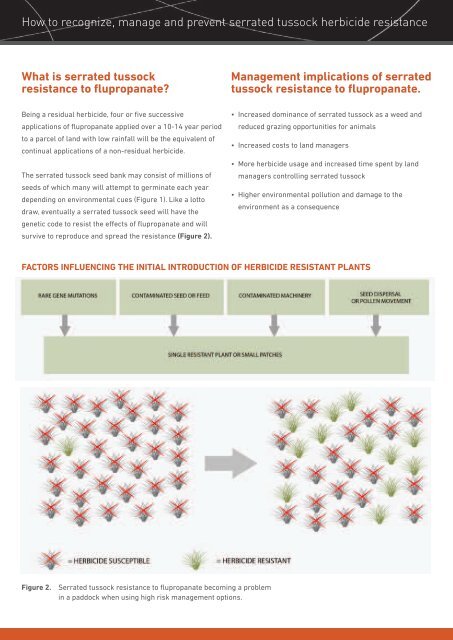Serrated tuSSock - Weeds Australia
Serrated tuSSock - Weeds Australia
Serrated tuSSock - Weeds Australia
Create successful ePaper yourself
Turn your PDF publications into a flip-book with our unique Google optimized e-Paper software.
How to recognize, manage and prevent serrated tussock herbicide resistance<br />
What is serrated tussock<br />
resistance to flupropanate?<br />
Management implications of serrated<br />
tussock resistance to flupropanate.<br />
Being a residual herbicide, four or five successive<br />
applications of flupropanate applied over a 10-14 year period<br />
to a parcel of land with low rainfall will be the equivalent of<br />
continual applications of a non-residual herbicide.<br />
The serrated tussock seed bank may consist of millions of<br />
seeds of which many will attempt to germinate each year<br />
depending on environmental cues (Figure 1). Like a lotto<br />
draw, eventually a serrated tussock seed will have the<br />
genetic code to resist the effects of flupropanate and will<br />
survive to reproduce and spread the resistance (Figure 2).<br />
• Increased dominance of serrated tussock as a weed and<br />
reduced grazing opportunities for animals<br />
• Increased costs to land managers<br />
• More herbicide usage and increased time spent by land<br />
managers controlling serrated tussock<br />
• Higher environmental pollution and damage to the<br />
environment as a consequence<br />
factors influencing the initial introduction of herbicide resistant plants<br />
Figure 2. <strong>Serrated</strong> tussock resistance to flupropanate becoming a problem<br />
in a paddock when using high risk management options.

















